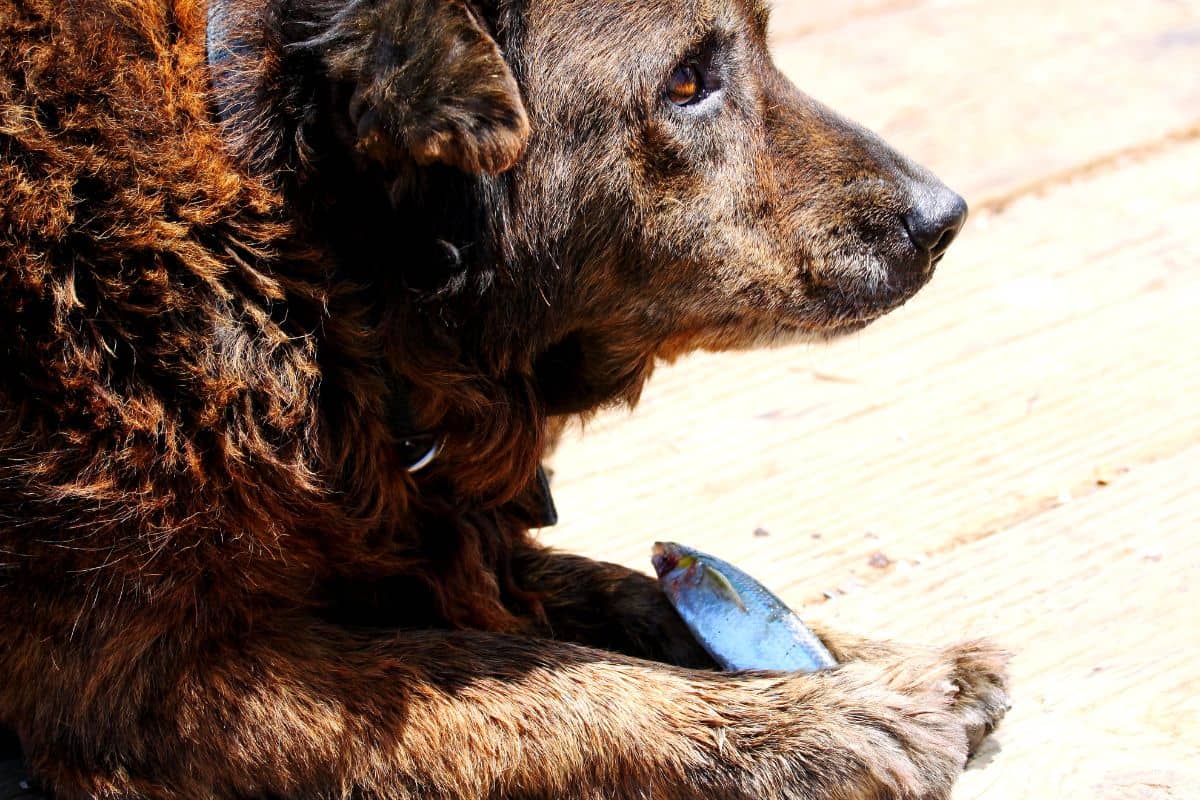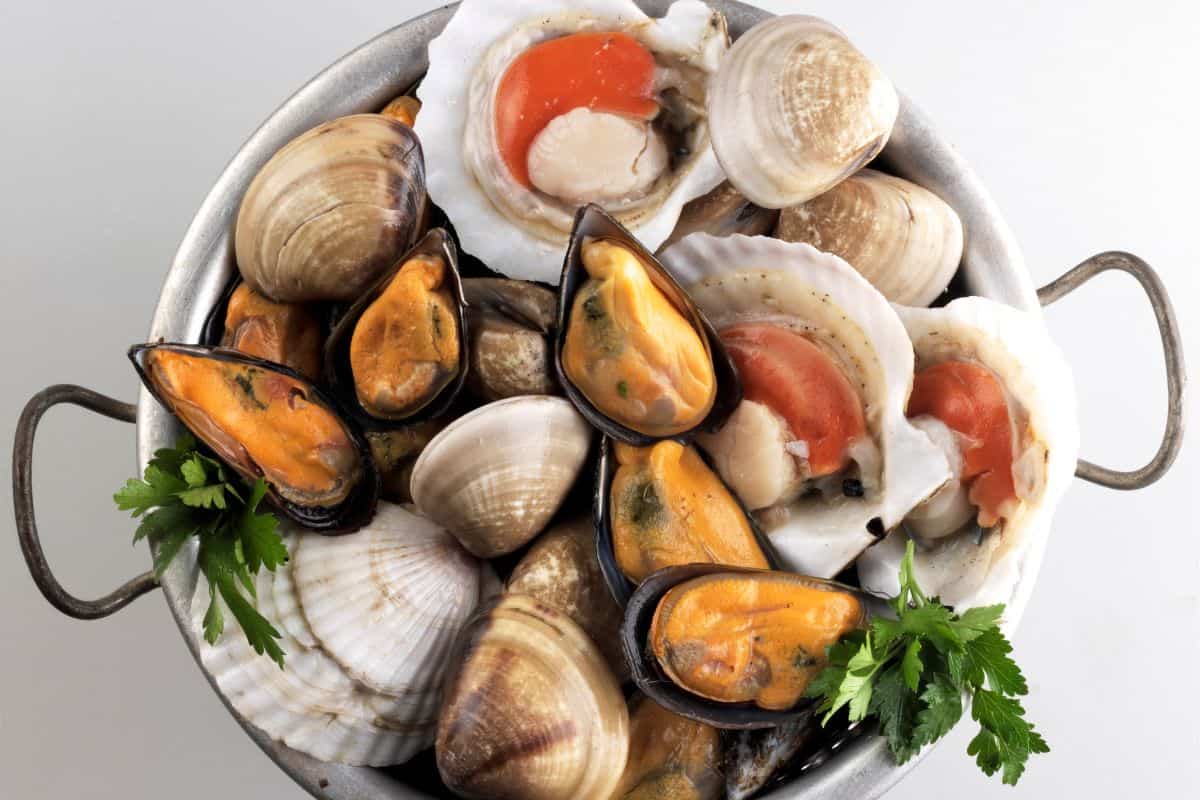How To Feed Raw Fish For Dogs
When you think of making a meal for your dog, you might not necessarily first think of giving them fish. Depending on where you are in the world, fish might either be super common, or a rarity.
If you live on the coast, there might be a million other people who feed their dogs raw fish. If you’re in the middle of Tennessee, however, it might not be your go-to meal option for your best friend.
Some cultures have fed their dogs raw fish for thousands of years. The question is – can we safely feed our furry friends raw fish now?
The majority of dogs have never even had fish in their life, so would it even be safe for them to start eating it now?
Well, the answer is a yes, for the most part, at least! There will always be dogs that are allergic to food items (just like people).
However, the vast majority of dogs should be able to safely eat fish and enjoy the benefits. If you’re willing to give it a try, then your four legged friend might just have a new favorite food item!
If you want to find out more about how to feed your dog raw fish, and why you should – stay tuned! We’re going to be going through everything you need to know about feeding your dog fish. You’re bound to learn something new.
Can Dogs Eat Raw Fish Safely?
As we briefly mentioned, yes! Dogs can eat raw fish safely. Of course, there will always be exceptions to this rule because dogs have allergies just like humans do.
This means that, while the majority of dogs will be able to enjoy fish without a problem, some might have adverse reactions to it.
That can be an intimidating risk to pet owners, and it’s a decision everyone has to make for themselves.
If your dog is going to be trying out fish for the very first time, it is always best for there to be supervision. You should be there in case anything goes wrong, or you notice your dog acting strangely after eating it.
If that happens, the first thing you should always do is take them to the vet to get checked.
With that being said, fish is rarely an issue for dogs. They should be able to eat them happily and without issue. It’s always worth mentioning the dangers
The Dangers
There are a few potential dangers that we need to talk about in regard to feeding your dog raw fish. Three main issues arise when talking about raw fish, or fish in general.
These three issues include parasites, heavy metals, and allergies.
We’ll take a look at each of these issues below.
Parasites
Unfortunately, it isn’t uncommon for some types of fish to have parasites. Parasites you might find in fish include flukes, tapeworms, and roundworms.
If you were to google any of those parasites in fish, you would be faced with some disgusting videos that you wish you hadn’t seen.
If parasites are something that you are incredibly worried about, there is a way to overcome the issue. To kill these parasites, it’s recommended for the fish to be frozen for 24 hours, minimum.
This might not seem like long enough for many, so you’re more than welcome to freeze your fish for a week, just to be sure.
As you might expect, this doesn’t actually get rid of the parasites. It merely kills them. That means that they are still in the fish, but are harmless now.
It doesn’t make the thought very appetizing, does it? Just remember that a lot of foods have parasites in them, so both us and our furry friends are eating all kinds of parasites without even knowing it.
You’re welcome!
Heavy Metals
Another safety issue when it comes to fish is that of heavy metals, such as mercury. Mercury is extremely dangerous, and is toxic when ingested.
Unfortunately, a growing number of fish are suffering from high levels of mercury. If you want your pup to be in their best health, you should avoid feeding them fish that are high in mercury.
Or, at the very least, you should really limit how much they have. This also goes for humans.
Always be mindful of the mercury content of the food you’re eating, because the effects are not something you want to experience.
Allergies
As you will already know now, allergies are another thing to look out for. We already discussed this, and though it isn’t especially common, it is something to be aware of nonetheless.
Always keep an eye on your dog if you’re giving them fish for the first time. If they react to the fish negatively, take them to the vet as soon as possible.
Should Dogs Eat Raw Fish?

There will be people who can argue for or against this all day. Some will say that it is too risky for dogs to be eating raw fish, and others will say that there’s little to no risk at all.
We are firm believers in seeing and understanding both sides of the argument.
When it comes to this argument, caution is key. If you can, find ways to find out if your dog has any allergies, and always freeze your fish before serving it.
There might be certain areas where there are parasite-less fish, but if you want to be careful, always freeze it first.
A minimum of 24 hours of frozen time is said to be enough to do it, but you might want to go overboard to err on the side of caution.
There’s nothing wrong with being cautious and caring about your pup’s wellbeing. Besides, if you wouldn’t want to eat it yourself, you definitely shouldn’t allow your dog to.
Taking your time is always beneficial, especially if you want to avoid a trip to the vet when you notice that something is up.
So, our opinion? Your dog should be eating raw fish if it is safe for them to do so. As their owner, it is up to you to determine that. Nobody knows your dog like you do!
You might be wondering what the benefits are to eating fish. Beside the delicious taste, there are several things that might make you want to give your dog raw fish. Let’s take a look at these points down below.
The Benefits
Omega-3
Omega-3 is essential for your dog to have healthy skin and fur. These oils are often added to the diet via Omega-3 rich treats or oil that is added to meals.
By getting the Omega-3 from the source, you are cutting out all the unnecessary additives and potential dangers that some of these products have,
Essential Minerals
Omega-3 isn’t the only beneficial thing that your dog would get from eating raw fish!
They would also benefit from getting things like calcium, magnesium, zinc, manganese, and all kinds of other minerals. These are all beneficial to dogs and will keep them healthy.
Vitamin D
Did you know that dogs can’t actually produce their own vitamin D? Because of this, it’s incredibly important for them to get their vitamin D from their diet.
A dog with vitamin D deficiency may experience heart failure. Muscle weakness and aches, lethargy, hair loss, and fatigue.
An animal that suffers from this condition is also likely to experience very slow healing, which can have an effect on infections and other injuries.
EPA And DHA
Both DHA and EPA are found in Omega-3 oils and are known to help reduce inflammation due to things such as arthritis. This is incredibly beneficial for dogs who have inflammation and suffer from pain.
Which Fish Can You Happily Feed To Your Dog?

There are some types of fish that are recommended for dogs to eat. However, there are many fish species that are safe for dogs to eat, but are somewhat less beneficial to them.
We will be going through some of the most beneficial fish for dogs to eat down below.
Sardines
Sardines are beneficial for dogs to eat because they are high in Omega-3 fatty acids, EPA, and DHA. They have moderate amounts of vitamin D in them, making them good options for canine consumption.
Mackerel
Mackerel, especially Atlantic Mackerel, provides the most EPA and DHA. Not only that, but they have very high levels of vitamin D. Because of this, they are often favored by anyone who intends to feed their dog fish.
Herring
While Herring (Atlantic) is very high in DHA and EPA, they are pretty low in vitamin D. So, while it’s great for some qualities, it isn’t the best option for dogs who specifically need vitamin D in their diet.
Which Raw Fish Should You Be Careful Of When Feeding Your Dogs?
There is one raw fish in particular that buyers need to be careful of if they are thinking of feeding it to their dog. Any ideas for what that fish is?
Salmon
Yep, salmon! This popular fish is delicious, but you really need to be wary of it. Especially if you are located in the Pacific Northwest.
This is the area where it is crucial to freeze your salmon for at least 24 hours before feeding it to anything.
The salmon must be frozen solid for a whole day, but we wouldn’t blame you for wanting to up the number to something closer to a week.
While this fish is pretty accessible in most places, it can be expensive. It has high levels of vitamin D, and moderate levels of EPA and DHA.
So, it’s a good option for dogs that specifically need vitamin D in their diet, but always proceed with caution!
It Is Not Recommended To Feed Your Dog
If you’re trying to give your dog the best food, you should avoid giving them foods such as the ones mentioned below.
Let’s take a quick look.
Shark
Sharks can grow to impressive sizes and live for a long time/ How does that relate to safety? They gradually accumulate mercury as they go through their lives.
Because of this, feeding shark meat to your dog can easily result in mercury poisoning.
Tilefish
Similarly, tilefish contain high levels of heavy metals and toxins that can prove very dangerous to your dog.
Swordfish
Swordfish is another fish that will contain high levels of heavy metals, such as mercury.
What About Fish Skin?
Fish skin is something that many pet owners may want to avoid giving their animals. While the skin typically holds high amounts of the minerals and beneficial materials, it is also the part of the fish that holds the most toxins.
Both the fat and the skin are the first line of defense. As a result, it often isn’t safe for dogs to consume.
With that being said, there is some fish skin that is perfectly safe for your canine to eat. In fact, fish skin treats are pretty popular, and that should tell you enough!
If you’re looking to give your dog some delicious fish skin safely, consider buying treats that have food reviews. It isn’t advised to try to make your own fish skin treats, unless you know for certain they are safe.
What About Shellfish?
Shellfish are a great way to get a lot of beneficial vitamins, nutrients, and oils into your dog’s diet. Some popular choices include:
- Blue mussels – some EPA and DHA, small amounts of both vitamin D a and manganese
- Canned Eastern Oysters – some EPA and DHA, large amounts of zinc (feed sparingly)

How Should You Feed Raw Fish To Your Dogs?
Now that we’ve covered all that, you might be wondering what the best way to feed your dog raw fish even is. It’s all well and good talking about why you should or shouldn’t do it, but what is the actual method?
Well, there are a couple of different methods you can try out to find the one your dog likes the most.
The method you go with may also depend on the breed of dog you have, and what their needs are. For example, some breeds might struggle to eat large chunks of food, while others won’t have an issue.
The age of the dog will also impact this choice. Older dogs typically do not have the same capabilities as their younger counterparts, and might need food in a different form for them to eat.
Just take a look at your dog and consider their breed, age, and any other factors you feel could be important. Once you take note of everything in front of you, you can make a decision that’s best for your dog.
If you have a dog that doesn’t struggle with anything, then you can also play around and test out these different methods. You might find that your dog loves one form but hates another!
Give It To Them Whole – Supervised
The first and easiest option would be to give your dog a whole fish to enjoy. If you decide to do this, you will need to supervise them at all times. Fish are notorious choking hazards because of their small bones and odd shapes.
If you have a dog that has the tendency to swallow everything, giving them a whole fish may not be the best idea. Older dogs might not do well with a whole fish, either.
It’s understandable if you don’t want to risk giving your canine companion a whole fish, because there are risks involved. Don’t worry if that’s the case, there are other options to go with!
Chop It Into Small Pieces
Next up – cutting it up into smaller pieces or chunks. This is a pretty easy option, and all you need to do is know how to cut squares off a fillet or whole fish.
Most dogs should be okay with eating chunks of fish, but again, you will want to be careful with bones and choking.
Mince The Fish
This might be the best option for dogs that aren’t great at chewing and are choking hazards to themselves. Mince the fish into tiny pieces and be sure to remove the bones from it.
This is a great method if you want to add it to the rest of your dog’s food bowl.
Add The Fish To The Rest Of Your Dog’s Meal
An easy way to get your dogs to eat food is simply to add it with other ingredients in their food bowl. This works especially well with minced fish or the chunks.
You can add some kibble and vegetables to the mix to make it a really tasty treat.
Give Your Dog Fish As A Snack
If your dog really loves fish, why not make a snack of it? Cut up some chunks or cubes to feed to your dog for a great treat. They will love you for it!
Safety Precautions
As we already mentioned, there are some big things that you need to keep an eye on when it comes to feeding your dog fish. We will recap them in the two sections below.
Ensure The Fish Is Safe For Consumption
Fish should be frozen solid for a minimum of 24 hours if you are worried about parasites. For salmon in the Pacific Northwest, this is a must.
Not only that, but you should ensure that they are not fish species that are high in mercury or other heavy metals (see the list mentioned prior).
Supervise With Whole Fish
If you are planning on giving your dog a whole fish – be there until they finish it and are okay. You might want to do this outside since it can get really messy and smelly.
Final Thoughts
And there you have it! Hopefully you learned a lot from this post, and are considering giving your dog raw fish in the suture if it is safe.
How do you feel about feeding your dog raw fish? If you’ve never done it before, do you think you will try it? If you do, let us know how your dog enjoyed it!
Please be careful when taking this step, because every dog will react differently. Good luck!






